Understanding the basics
Groundstrokes serve as a bridge between the basics and the rooted strategies of pickleball. They can be defined as any shot that occurs after the ball bounces on your side of the court, typically from the baseline or just behind it. Mastering this component of the game can significantly affect your performance, transforming your approach to rallies and shot placements.
When contrasting groundstrokes with volleys, think of groundstrokes as the steady heartbeat of a player’s rhythm. They're executed with finesse and timing, providing an opportunity to control the pace of a match. Conversely, volleys demand quick reactions and often require a player to sacrifice precision for speed. The mechanics of groundstrokes apply to a variety of shots such as returns where you anticipate the opponent's serve and drop shots, where finesse can lead to establishing dominance in a rally.
What is the Pickleball groundstrokes?
- Definition: A shot made after the ball is bounced on your side of the court.
- Use: Establish control during rallies, especially from the baseline.
- Contrast with Volleys: Unlike volleys struck before the ball bounces, groundstrokes offer angles, power, and depth.
The execution of a groundstroke may seem straightforward, yet it intertwines numerous elements. The balance between power and precision creates space for strategic decision-making, enabling players to dictate future shots and ultimately the pace of the game.
The importance of grip and stance
A solid foundation in grip and stance sets the stage for effective execution of groundstrokes. The continental grip stands as the gold standard, offering versatility for both forehand and backhand shots. This grip allows players to seamlessly transition between various strokes while maintaining control and spin.
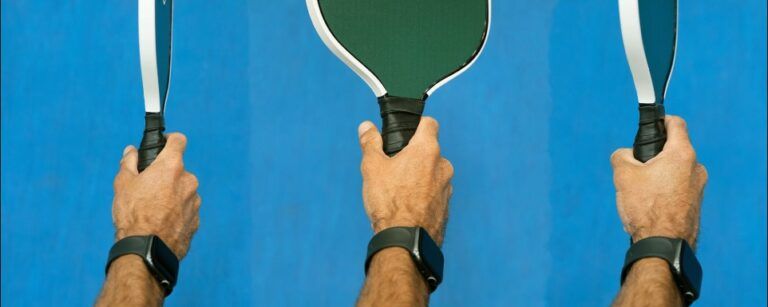
Equally crucial is the ready position, where players adopt a stance that is both comfortable and prepared. Think of this stance as the launching pad for your shots; solidifying your feet shoulder-width apart and bending slightly at the knees prepares your body for action. Within the realm of stances, the concepts of open and closed stances emerge, each adapting to different game situations:
Grip Choice
- Continental Grip: Versatile for various shots.
- Eastern Grip: Offers increased topspin on forehands.
Ready Position
- Feet shoulder-width apart: Ensures stability.
- Weight on the balls of your feet: Promotes agility.
Open Stance vs. Closed Stance
- Open Stance: Ideal for quick responses and lateral movements.
- Closed Stance: Beneficial for generating maximum power during groundstrokes.
Your grip and stance directly influence your weight transfer – an essential factor in executing powerful strokes. Adopting the right positioning not only enhances control but also opens pathways for strategic shot placement.
Mastering the groundstroke swing
The swing is where the magic happens where precision fuses with power to create beautifully executed shots. Emphasizing a compact motion allows players to focus on control over sheer force. Much like a finely tuned instrument, a groundstroke demands finesse.
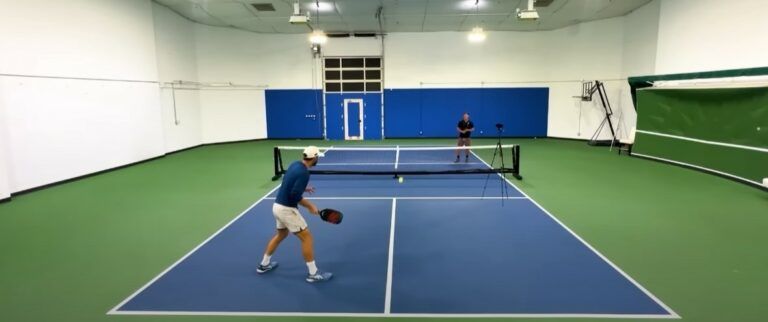
Comprising three stages the backswing, forward swing, and follow-through each phase plays a pivotal role. Consider the backswing as drawing back the bowstring before releasing an arrow; it's an essential build-up to create momentum. During the forward swing, maintaining a consistent paddle path is crucial for achieving the desired contact point. Follow-through, then, is akin to a painter completing a masterpiece, where you finish high and proud to ensure accuracy.
Backswing
- Preparation: Pivot your body, bringing the paddle back low.
Forward Swing
- Body Movement: Step forward with your opposite foot, executing a low-to-high motion.
Follow-Through
- Completion: Finish high, ensuring your paddle ends above your shoulder.
By grasping the concept of achieving two contact points, players can further sharpen their focus and enhance shot accuracy. Mastering the swing is like layering notes in a melody; with practice, each stroke becomes a refined and harmonious expression of your skills.
Footwork: The first step to success
While striking the ball is vital, the footwork that precedes your swing cannot be underestimated. Footwork lays the groundwork for effective shots by ensuring proper positioning and balance. Think of it as the dance that complements the beautiful rhythm of the game. The principle of "feet first, swing second" emphasizes that before your paddle connects with the ball, your feet must guide you there.
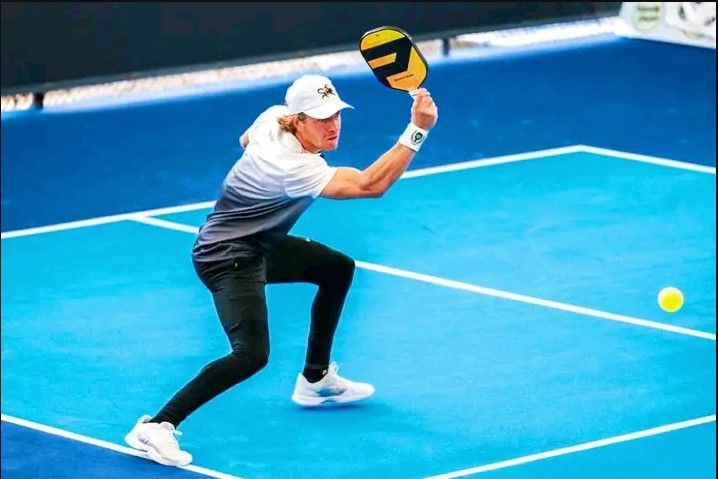
Understanding the nuances of movement creates an agile player. Proper footwork will make it easier for you to adjust your positioning, thereby allowing you to focus on what truly matters the execution of your shots.
Key Footwork Techniques
- Shuffle Steps: Quick adjustments to position yourself effectively.
- Side Steps: Lateral movements prepare for forehand and backhand swings.
- Split Steps: Timing your movement just before your opponent strikes.
Your footwork’s role in maintaining balance during your swing cannot be overstated. An agile player can position their body effectively, ensuring their groundstrokes are not only powerful but also executed with precision.
Power and control: The kinetic chain
Power generation in pickleball stems from proper weight transfer, linking your movements like the gears of a well-oiled machine. Shifting weight from your back foot to the front foot may seem trivial, yet it transforms how much kinetic energy you harness.
The kinetic chain is conceptualized as a series of movements connecting the various sections of your body, culminating in a powerful swing. Think of it as a concert, where every instrument works together harmoniously to produce an unforgettable experience. Coordination, timing, and rotation are critical as your core engages and your hips extend, intensifying the impact of your strokes.
Unleashing power with weight transfer
- Back Foot to Front Foot: Ensures that power is generated effectively.
The Kinetic Chain
- Sequential Movement: Body parts work together for a fluid swing.
- Core Engagement: Plays a pivotal role in generating power through rotation.
Understanding this interconnection allows players to channel their energy into each strike, creating depth and control that can perplex opponents. Visualize every part of your body working in conjunction; the harmony leads to powerful strokes and strategic advantages.
The role of the non-dominant hand
In the dance of groundstrokes, the non-dominant hand plays a vital role, often overlooked yet crucial for maintaining balance and swing guidance. This hand is responsible for stabilizing the paddle and ensuring smooth rotational movement. It acts as an anchor, guiding your swing path and providing necessary balance.
- Balance and Guidance: The off-hand helps maintain control during your shot.
- Swing Path: Assists in generating a more fluid motion.
Incorporating the non-dominant hand into your technique elevates your groundstrokes, transforming a basic maneuver into a strategic weapon.
Forehand and backhand groundstrokes
Every pickleball player must confidently execute both forehand and backhand groundstrokes. Differences in technique, grip, and stance dictate how successful these approaches can be.
Forehand groundstrokes: Techniques for power and control
Forehand groundstrokes are often viewed as the cornerstone of an aggressive game. By reviewing variations in grip and stance, players can maximize power when executing shots. An eastern grip can add topspin to your forehand while enabling control and depth.
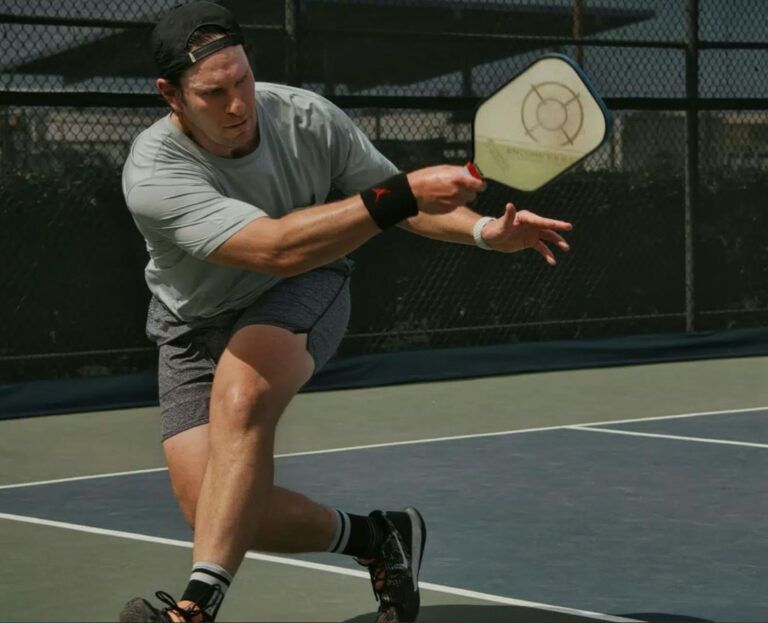
Additionally, maintaining a consistent swing path and ensuring the ball meets your paddle in the ideal contact zone are crucial elements of success. Common errors often arise from improper mechanics, and addressing these can profoundly impact your game.
Backhand groundstrokes: Choosing your style
The backhand, whether executed with one hand or two, presents unique advantages and challenges. One-handed backhands allow for a longer reach but may require more consistent timing. In contrast, two-handed backhands can facilitate more control and stability.
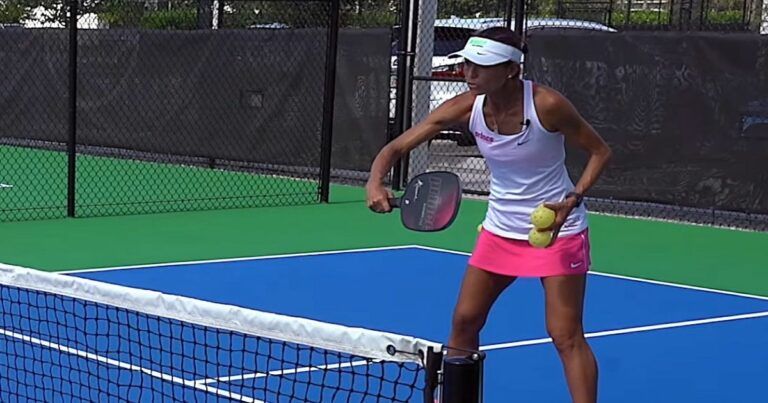
Key differences between the two styles include:
- One-Handed Backhand: Offers power and reach but demands strong timing.
- Two-Handed Backhand: Provides stability and control, advantageous for generating topspin.
Understanding your strengths and preferences allows you to fine-tune your backhand approach, creating a reliable asset in your overall game strategy.
Advanced groundstroke techniques and strategies
As players advance, embracing sophistication in their game becomes vital. Key foundations of advanced techniques, such as the unit turn and the mechanics of adding spin, contribute to a polished performance on the court.
The unit turn: A key to advanced groundstrokes
Tyson McGuffin, a prominent figure in the pickleball community, emphasizes the unit turn concept, which involves coiling the body for maximum power generation. Ultimately, proper body rotation contributes to a more effective swing, helping to elevate an average groundstroke to a winning one.
Adding spin to your groundstrokes
Understanding how to generate topspin, backspin, and even sidespin broadens your arsenal. Altering the paddle angle changes the ball’s trajectory, offering unique ways to approach your opponent.
By incorporating strategic use of spin and maintaining balance during dynamic shots, players not only ensure their groundstrokes remain powerful but also versatile.

Groundstrokes in game situations
Tactical gameplay requires adaptability, particularly in returning serves and executing the third shot drop. These situations require players to leverage their groundstroke proficiency to reposition their opponents.
The return of serve: Setting up the point
A strategic return of serve is your first opportunity to assert dominance in a rally. By neutralizing powerful serves and turning them into offensive opportunities, you not only establish the tempo of the point but also set the stage for future shots.
The third shot drop: A groundstroke transition to the net
Utilizing a well-executed third shot drop is vital for transitioning to the net. This shot acts as a bridge, allowing you to close the distance between you and your opponent while keeping control of the game.
Defensive groundstrokes: Resetting the rally
In moments where aggression falters, defensive groundstrokes come into play. Utilizing lobs and block shots, players can reset the rally and regain footing, ultimately allowing for strategic repositioning.
Drills to elevate your groundstroke game
Effective training not only hones your skills but builds excitement for the game. Experimenting with solo drills, partner exercises, and even utilizing a ball machine can offer extensive benefits to your groundstroke practice.
Solo drills for consistency and control
- Drop-and-Hit Drills: A foundational exercise that encourages feel and control.
- Wall Drills: Enhances rhythm and accuracy against a predictable target.
- Shadow Swings: Helps to visualize technique without the need for a ball.
Partner drills: Simulating game scenarios
Group drills can provide an immersive experience:
- Cross-Court Drills: Focus on shot placement and timing.
- Target Practice: Offers precision shooting in realistic match conditions.
Ball machine drills: Intensive repetition and stamina
Using a ball machine allows players to focus on shot variety while working on consistency. This ultimately leads to a well-rounded skill set tailored for match settings.
The mental game: A key to groundstroke mastery
Skill mastery in pickleball is equally about mental resilience. Developing patience and visualization unlocks newfound depths in your gameplay.
Developing patience and persistence
Mastering groundstrokes takes time, and embracing a mantra of progress over perfection brings a sense of calm. Patience nurtures confidence, allowing players to improve steadily without succumbing to undue pressure.
Visualization: Seeing success before it happens
Employing visualization techniques, where players mentally recreate successful strokes, can ease anxiety and build confidence. Creating a mental picture of proper technique reinforces execution.
Staying positive and focused during rallies
Maintaining positivity during matches can be the difference between success and frustration. Developing mental toughness fosters concentration and composure, enhancing your ability to perform under pressure.
Conclusion
Mastering groundstrokes in pickleball is a journey that requires dedication, technique, and mental fortitude. From understanding the mechanics of a solid grip to implementing advanced strategies during gameplay, each element enhances a player’s overall performance. Remember, this beautiful game thrives on the intricacies of control, power, and timing. By investing your energy into regular practice and embracing the art of groundstrokes, you’ll not only elevate your skill level but also deepen your appreciation for the sport. So grab your paddle, master these essential techniques, and embark on an exciting journey toward becoming a pickleball maestro!










